Related Research Articles

The Reconstruction era was a period in United States history following the American Civil War, dominated by the legal, social, and political challenges of abolishing slavery and reintegrating the former Confederate States of America into the United States. During this period, three amendments were added to the United States Constitution to grant equal civil rights to the newly freed slaves. Despite this, former Confederate states often used poll taxes, literacy tests, and intimidation to control people of color.
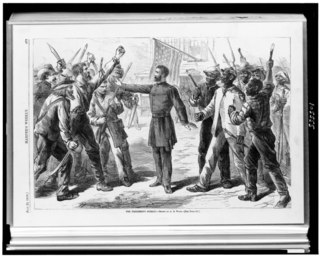
The Bureau of Refugees, Freedmen, and Abandoned Lands, usually referred to as simply the Freedmen's Bureau, was a U.S. government agency of early post American Civil War Reconstruction, assisting freedmen in the South. It was established on March 3, 1865, and operated briefly as a federal agency after the War, from 1865 to 1872, to direct "provisions, clothing, and fuel...for the immediate and temporary shelter and supply of destitute and suffering refugees and freedmen and their wives and children".
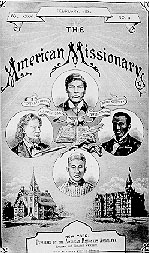
The American Missionary Association (AMA) was a Protestant-based abolitionist group founded on September 3, 1846 in Albany, New York. The main purpose of the organization was abolition of slavery, education of African Americans, promotion of racial equality, and spreading Christian values. Its members and leaders were of both races; The Association was chiefly sponsored by the Congregationalist churches in New England. The main goals were to abolish slavery, provide education to African Americans, and promote racial equality for free Blacks. The AMA played a significant role in several key historical events and movements, including the Civil War, Reconstruction, and the Civil Rights Movement.

John Gray Foster was an American soldier. A career military officer in the United States Army and a Union general during the American Civil War, he served in North and South Carolina during the war. A reconstruction era expert in underwater demolition, he wrote a treatise on the subject in 1869. He continued with the Army after the war, using his expertise as assistant to the Chief Engineer in Washington, DC and at a post on Lake Erie.
At the end of the American Civil War, the devastation and disruption in the state of Georgia were dramatic. Wartime damage, the inability to maintain a labor force without slavery, and miserable weather had a disastrous effect on agricultural production. The state's chief cash crop, cotton, fell from a high of more than 700,000 bales in 1860 to less than 50,000 in 1865, while harvests of corn and wheat were also meager. The state government subsidized construction of numerous new railroad lines. White farmers turned to cotton as a cash crop, often using commercial fertilizers to make up for the poor soils they owned. The coastal rice plantations never recovered from the war.

This is a selected bibliography of the main scholarly books and articles of Reconstruction, the period after the American Civil War, 1863–1877.

Benjamin Franklin Whittemore, also known as B. F. Whittemore, was a minister, politician, and publisher in the United States. After his theological studies, he was a minister and then during the Civil War, a chaplain for Massachusetts regiments. Stationed in South Carolina at the end of the war, he accepted a position of superintendent of education for the Freedmen's Bureau. A Republican, he was elected a U.S. Representative from South Carolina. He was censured in 1870 for selling appointments to the United States Naval Academy and other military academies. He spent his later years in Massachusetts, where he was a publisher.

Francis Lewis Cardozo was an American clergyman, politician, and educator. When elected in South Carolina as Secretary of State in 1868, he was the first African American to hold a statewide office in the United States.
James Henry Harris was an American civil rights advocate, upholsterer, and politician. Born into slavery, he was freed as a young adult and worked as a carpenter's apprentice and worker before he went to Oberlin College in Ohio. For a time, he lived in Chatham, Ontario, where he was a member of the Chatham Vigilance Committee that aimed to prevent blacks being transported out of Canada and sold as slaves in the United States.

Jonathan Jasper Wright was an African-American lawyer who served as a state senator and judge on the Supreme Court of the State of South Carolina during Reconstruction from 1870 to 1877.
The civil rights movement (1865–1896) aimed to eliminate racial discrimination against African Americans, improve their educational and employment opportunities, and establish their electoral power, just after the abolition of slavery in the United States. The period from 1865 to 1895 saw a tremendous change in the fortunes of the Black community following the elimination of slavery in the South.
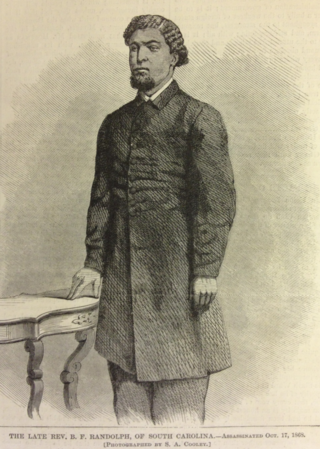
Benjamin Franklin Randolph was an American educator, spiritual advisor, newspaper editor who served as a South Carolina state senator during the Reconstruction Era. Randolph was selected to be one of the first African American Electors in the United States at the 1868 Republican National Convention for the Ulysses Grant Republican presidential ticket. Randolph also served as the chair of the state Republican Party Central Committee. He was a delegate to the 1868 South Carolina Constitutional Convention, where he played an important role in establishing the first universal public education system in the state, and in granting for the first time the right to vote to black men and non-property owning European-American men. On October 16, 1868, Randolph was assassinated by members of the Ku Klux Klan.
The Union Academy was a school founded with the aid of the Freedmen's Bureau in Gainesville, Florida in 1867. It was the first school for African Americans in Gainesville and Alachua County, and provided a free quality education to African Americans when public schools in Alachua County were struggling. The Union Academy was eventually absorbed into the county school system, and remained in operation until 1923.

Thomas Whitmarsh Cardozo was an American educator, journalist, and public official during the Reconstruction Era in the United States. He served as State Superintendent of Education in Mississippi and is the first African American to have held the position.
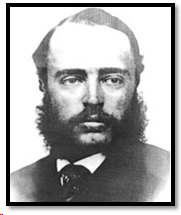
Justus Kendall Jillson (1839–1881) was an American educator and politician.

Brigadier-General John Randolph Lewis was an American dentist, soldier, administrator, and postmaster, known for his work with the Freedmen's Bureau.
Simeon W. Beard was an American minister, teacher, and politician who worked in Charleston, South Carolina and then in Augusta, Georgia. He served in the Union Army. He was a delegate to Georgia's constitutional convention in 1867 and 1868. African American legislators were expelled from office in Georgia.
Benjamin Byas was an African-American lawyer and politician during the Reconstruction era. He was a member of the South Carolina House of Representatives representing Orangeburg County from 1870 to 1872, best remembered for being shot by a journalist he was assaulting at the South Carolina State House.
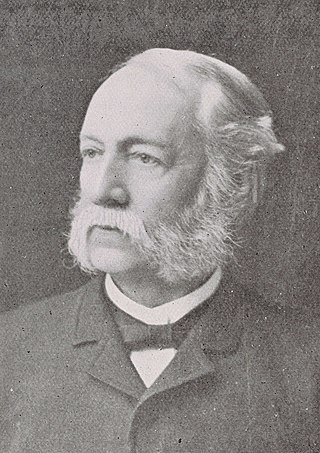
Ralza Morse Manly was an American minister and educator. He led the development of schools for African-Americans in Virginia after the end of the American Civil War as the superintendent of Freedmen's Bureau schools in the state. Manly spearheaded the foundation of the Richmond Colored Normal School.

Freedmen's Schools were educational institutions created soon after the abolition of slavery in the United States to educate freedmen. Due to the remaining opposition to equality between blacks and whites, it was difficult for the formerly enslaved to receive a proper education, among a myriad of other things. Schools were made especially for blacks but were open to anyone regardless of race. These schools were far from perfect; however, they did give African Americans hope and opportunity for their future.
References
- 1 2 Webster, Laura Josephine (June 4, 1916). "The Operation of the Freedmen's Bureau in South Carolina". Department of history of Smith college – via Google Books.
- ↑ "Reuben Tomlinson appointment as Sup. of Schools Oct 1865, South Carolina Leader, Charleston, South Carolina, October 7, 1865, page 2". Newspapers.com.
- ↑ "History of the Freedmen's Bureau in South Carolina". Lowcountry Africana.
- ↑ Jenkins, Wilbert L. (May 15, 2003). Seizing the New Day: African Americans in Post-Civil War Charleston. Indiana University Press. ISBN 9780253028297 – via pages 84, 191, 200.
- ↑ "Journal of the House of Representatives of the State of South-Carolina". The State. June 4, 1870 – via Google Books.
- ↑ Capace, Nancy (January 1, 2000). Encyclopedia of South Carolina. Somerset Publishers, Inc. ISBN 9780403093472 – via Google Books.
- ↑ Ginsberg, Benjamin (April 12, 2010). Moses of South Carolina: A Jewish Scalawag during Radical Reconstruction. JHU Press. ISBN 9780801899164 – via Google Books.
- ↑ Allen, William Francis et al. Slave Songs of the United States. New York: A. Simpson & Co., 1867, pp. xxxvii, xxxix.
- ↑ Correspondence of Superintendent Reuben H. Tomlinson Dates: 1865-1867, South Carolina. State Department of Education. Superintendent. Series, Correspondence of Superintendent Reuben H. Tomlinson, 1865-1867 Container: 000001